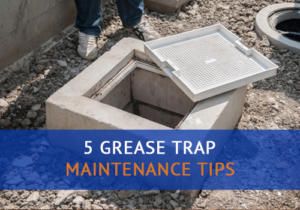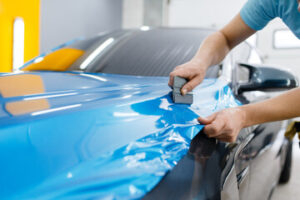Septic tanks are designed to remove solids from household wastewater. Heavier solid waste sinks to the bottom of the tank while scum and grease, lighter materials float to the top of the water.
Bacteria in the septic tank break down these materials but cannot do this forever. Eventually, the septic tank will need to be pumped. Contact Septic Tank Pump Out Perth now!

Septic tanks are buried, watertight containers that hold raw wastewater before it exits into an absorption field. The tank is usually made from concrete, fiberglass, or polyethylene. When a person flushes something down the drain, hydraulic pressure forces the waste through the pipes and into the tank. Once inside the tank, the solid waste drops to the bottom, forming sludge. Oil and grease floats to the top as scum. Compartments and a T-shaped outlet allow the liquid wastewater (effluent) to leave the tank into the absorption field.
Your septic system relies on bacteria and other good microbial organisms to break down the sewage waste and pass it back into the soil through the absorption field. The septic tank must regularly pump out to keep these helpful organisms alive.
Many factors can impact how often the septic tank needs to be pumped. The tank’s size and the number of people living in the house are important factors. Also, the types of things that go down the drain can affect how quickly the tank fills up and needs to be pumped.
A septic tank should be inspected before buying or selling a home. The inspector should provide documentation of the last septic tank pumping date and recommend an appropriate schedule. If the tank has not been pumped recently, the owner should get it pumped out as soon as possible to avoid a full tank.
Signs that it’s time to get the septic tank pumped include an overflowing toilet or drains that smell like sewage. Standing water in the yard or puddles near the septic system may also indicate a problem. In addition, a clogged venting pipe will trap gasses that can cause unpleasant odors in the home.
In addition to getting the septic tank pumped, a septic technician will inspect the septic system for signs of damage and corrosion. He or she will also look for any cracks in the tank or tank riser, as well as the condition of the baffles and dividing wall.
You can help to ensure that your septic tank stays at an optimal level by using less water and avoiding things that should never be flushed down the drain. Cigarettes, paper towels, feminine hygiene products and kitty litter should go in the trash instead of the septic system. Other common culprits include solvents, paint and varnish, oil, chemicals, and pesticides.
Why Do I Need to Pump My Septic Tank?
A septic tank holds sewage waste from household drains until it is full and needs to be pumped. It is important to have your septic tank pumped out regularly to prevent sewage backups into your home and environmental contamination. The frequency of having your septic tank pumped depends on how many people live in your house and the size of your septic system. A larger family produces more sewage waste than a single person living alone, so it will fill your septic tank faster and require it to be pumped out more frequently.
A home’s septic tank also needs to be pumped out when the solids in the sludge layer have built up too much. If the sludge level gets too high, it can flow into your drainfield, where it will clog and cause your septic system to fail. This can expose humans and animals to the disease-causing organisms in sewage, so having your septic tank pumped out is essential.
Septic tank pumping companies will also use the opportunity to inspect your septic system and look for any repairs that may be necessary. They will also check the condition of the septic tank itself, looking for cracks or other signs of failure. They will also take note of the amount of sludge in your septic tank and recommend a time to schedule another pump out.
Whether you have a traditional or alternative septic system, the tank must be pumped out when the sludge level gets too high. Adding septic tank additives can reduce the frequency of pumping, but it is essential that they are added correctly and not in excess. Using too many septic tank additives can disrupt the balance of your septic system, causing the bacteria to compete with each other and cause negative effects.
If you think it’s time to have your septic tank pumped, the first step is to locate your septic tank access port. This is usually located between 10 and 25 feet from your home. Before entering the tank, make sure to put on gloves and eyewear for safety. Next, insert a wooden rod vertically into the tank and note how far the rod extends. If the sludge covers more than one-third of the rod, it’s time to call for a pump out. Foul odors and standing water around drains are other signs that it’s time to have your septic system pumped out. However, these symptoms can also indicate other problems such as sewer blockages or clogged pipes, so a professional diagnosis is required.
How Do I Pump My Septic Tank?
As the wastewater passes through your septic system, a layer of sludge forms in the bottom of the tank. This is a normal and necessary process of the system to ensure that bacteria are fully working and the solid waste is digested and separated from the liquid wastewater. This sludge is then dispersed into the drain field through a series of porous pipes. The soil of the drain field then absorbs and neutralizes the pathogens. If you use a garbage disposal unit, this can increase your septic tank pumping needs as food waste is not digested by healthy bacteria in the septic system and will accumulate as sludge.
When you need to have your septic tank pumped, it is best to call a professional septic tank service company. This is because the process of pumping a septic tank can be messy and requires special equipment you are probably not familiar with. It is also the best way to ensure that all the sludge and other materials are removed from your septic tank.
Prior to having your septic tank pumped, there are some things you can do to prepare the area. This includes clearing out the area around the septic tank, ensuring that there are no weeds, tree roots or other obstructions that might interfere with the septic tank access points. You can also help facilitate the process by having risers installed at your septic tank’s inspection ports and central access port. These are a relatively inexpensive investment that will eliminate the need for digging and will make future maintenance much easier.
Once your septic tank is pumped, it is also a good time to have your septic system inspector check for leaks or other problems. In addition, this is the best time to inspect your septic tank baffles to make sure they are not missing or broken. A septic tank without baffles is very vulnerable to clogs and backups, so they are an important part of the septic system.
It is also a good idea to mark the location of your septic tank and drain field. This will help you locate your septic tank in the future and will make it easier for septic tank professionals to access the tank for maintenance and cleaning.
What Are the Benefits of Pumping My Septic Tank?
When you get your septic tank pumped out on time, it protects your home from costly drain backups and unpleasant odors, as well as prevents sewage leaking into the ground water. It also extends the life of your septic system and saves you money over the long run.
Getting your septic tank pumped out on a regular basis reduces the amount of slowly biodegradable solid waste, such as toilet paper and cellulosic compounds, and non-biodegradable solid waste, such as kitty litter and plastics, that accumulates in the wastewater stream. This keeps the septic system from becoming overloaded, which can cause it to break down.
The more solid waste in your septic tank, the harder it is to get rid of. Fortunately, septic tank pumping can help keep the solids in the tank low enough to be pumped out easily. You can estimate the level of sludge in your tank by using a septic tank gauge, or you can make a home-made septic tank sludge stick yourself. To use the septic tank gauge, hold it upright in the tank and lower the velcro end down into the sludge until you feel it hit the bottom of the tank. The dark, thick sludge will cling to the velcro and allow you to measure how much sludge is in the tank.
If you do not pump your septic tank, the solids in the septic system will flow into the drainfield and clog it. The resulting failure of the drainfield can expose your household to sewage odors and contaminate groundwater supplies, causing disease in people and animals. It is important to pay attention to warning signs of septic tank problems, such as slow draining in your home or standing water in the yard.
Regular septic tank pumping is the best way to extend the life of your septic system and keep it working properly. If you are unsure whether your septic tank needs to be pumped, contact a professional. A professional will assess your septic tank size and usage and determine the best schedule for you to keep it in good condition.


